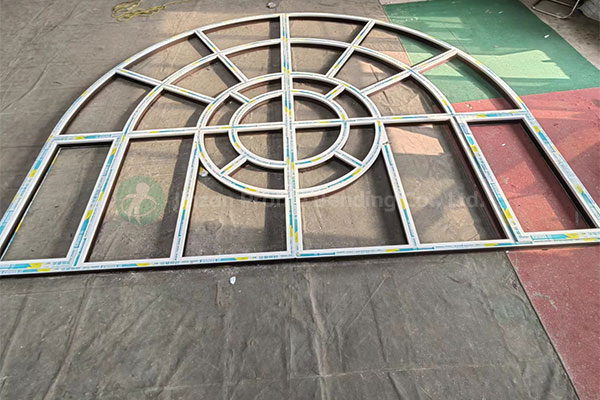Redefining the construction industry with innovative solutions, cuttin-edge technology and sustainable practices
Profile Bending 2025-06-13
In modern manufacturing industry, as an important metal forming process, industrial bending technology is widely used in construction, machinery, automobile and other fields. Especially in China, with the progress of science and technology and the development of industrialization, industrial bending technology has been significantly improved. Jinzhan bending manufacturer will deeply discuss the equipment and process flow of Chinese industrial bending, and show how this technology can achieve the combination of efficiency and accuracy.
First, the basic concept of industrial bending
Industrial bending refers to the process of bending metal profiles on specific equipment. By applying an external force, the metal material is plastic deformed within a certain radius of curvature to form the desired shape. Compared with the traditional bending method, modern industrial bending technology not only improves the production efficiency, but also improves the accuracy and consistency of the finished product.
China Industrial bending equipment and process: to create efficient and accurate metal forming technology
Second, the main equipment of Chinese industrial bending
1. CNC bending machine
Numerical control (CNC) bending machine is one of the most commonly used equipment in modern industrial bending. It is controlled by computer program and can achieve precise bending of metal profiles. The advantage of this device lies in its high efficiency and high accuracy, which can quickly adjust the parameters to adapt to different specifications and shapes of profiles and reduce the error of manual operation.
2. Hydraulic pipe bender
Hydraulic pipe bender is widely used to bend large or thick wall profiles. It applies high pressure through the hydraulic system to keep the profile stable during bending. Hydraulic pipe bender can deal with more complex bending shapes, and has strong adaptability, suitable for mass production.
3. Mechanical pipe bender
The mechanical pipe bender adopts the traditional mechanical transmission mode and realizes the bending of the profile through the lever principle. Although it is slightly inferior to numerical control equipment in accuracy and efficiency, its simple structure and convenient maintenance are still widely used in some small factories.
4. Molding mold
Forming die is one of the key components in the process of industrial bending. High-quality molds can effectively control the bending radius and shape of the profile and ensure the accuracy of the finished product. The design and manufacture of molds usually requires a professional team of engineers to customize with the actual needs.

Three, industrial bending process
1. Material preparation
Before starting to stretch and bend, it is first necessary to select the appropriate metal material. The material, thickness and surface state of the profile will affect the quality of the final product. Commonly used materials include aluminum alloy, carbon steel and stainless steel.
2. Design and planning
According to the requirements of customers, engineers will design the profiles to be processed and use CAD software for 3D modeling. The design of this stage includes the determination of bending Angle, radius and the size of the profile, etc., to ensure that the desired effect is achieved in the subsequent processing.
3. Programming
In the CNC bending machine, after the design is completed, the corresponding program needs to be input. This includes setting parameters such as the number of bends, the Angle and speed of each bend. The accuracy of the program directly affects the accuracy of the finished product, so it needs to be rigorously verified and tested.
4. Tensile bending processing
After material preparation and programming, it enters the stage of tensile and bending machining. The operator places the profile on the device and starts the machinery for bending. In this process, the equipment will automatically complete the bending work according to the preset program to ensure the accuracy of each bending part.
5. Inspection and adjustment
After the bending is completed, the finished product needs to go through strict quality inspection. Mainly check the bending Angle, radius of curvature and surface quality. If problems are found, the engineer makes the necessary adjustments to ensure that the finished product meets the design requirements.
6. Post-processing
Finally, the finished profile may require subsequent treatments such as surface spraying, heat treatment, etc. to improve its corrosion resistance and aesthetics. These post-processing processes also have an important impact on the performance and appearance of the finished product.
The equipment and process of Chinese industrial bending technology are constantly innovating and developing, which makes it play a more and more important role in modern manufacturing. Through efficient equipment and scientific process, industrial bending can not only meet the market demand for high precision and high efficiency, but also promote the progress and development of related industries.